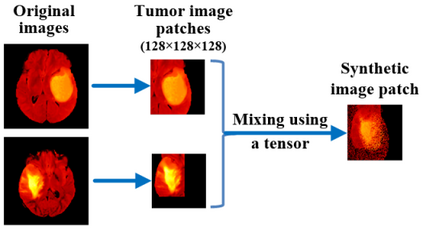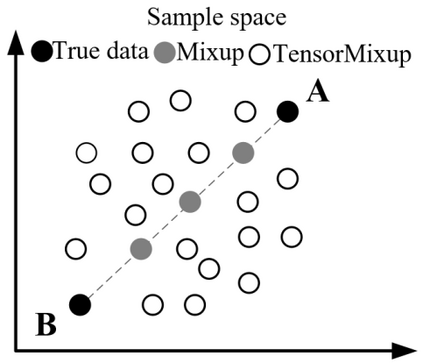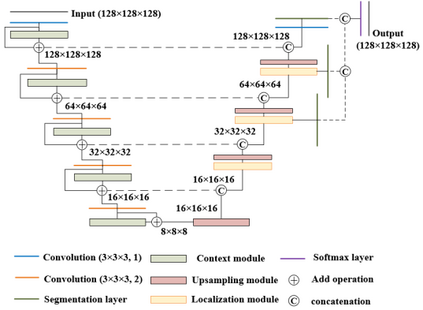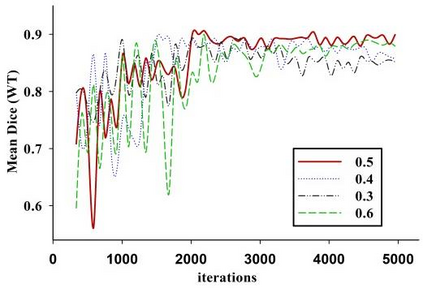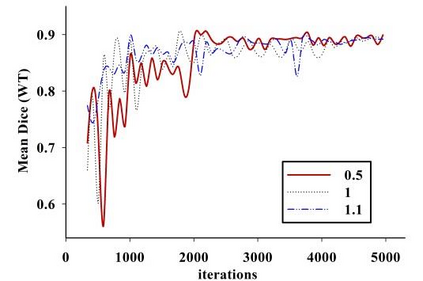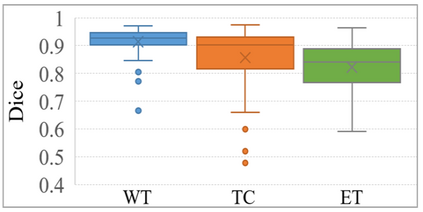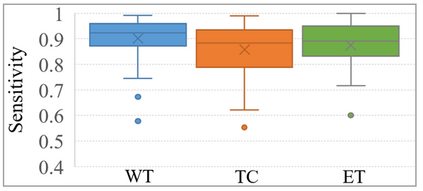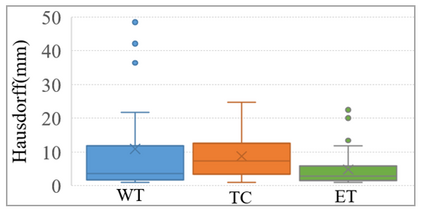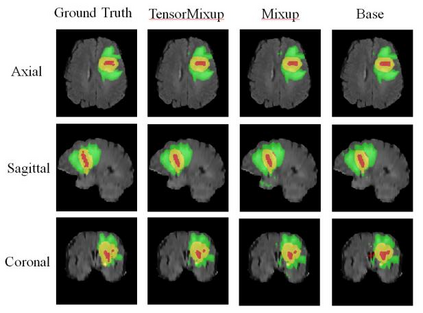Automatic segmentation of glioma and its subregions is of great significance for diagnosis, treatment and monitoring of disease. In this paper, an augmentation method, called TensorMixup, was proposed and applied to the three dimensional U-Net architecture for brain tumor segmentation. The main ideas included that first, two image patches with size of 128 in three dimensions were selected according to glioma information of ground truth labels from the magnetic resonance imaging data of any two patients with the same modality. Next, a tensor in which all elements were independently sampled from Beta distribution was used to mix the image patches. Then the tensor was mapped to a matrix which was used to mix the one-hot encoded labels of the above image patches. Therefore, a new image and its one-hot encoded label were synthesized. Finally, the new data was used to train the model which could be used to segment glioma. The experimental results show that the mean accuracy of Dice scores are 91.32%, 85.67%, and 82.20% respectively on the whole tumor, tumor core, and enhancing tumor segmentation, which proves that the proposed TensorMixup is feasible and effective for brain tumor segmentation.
翻译:显微镜及其次区域的自动分离对于诊断、 治疗和监测疾病非常重要。 在本文中, 推荐并应用了称为 TensorMixup 的增强法, 用于脑肿瘤部分的三维 U- Net 结构。 主要想法包括: 首先, 根据具有相同模式的两个病人的磁共振成像数据中的地面真象标签, 根据显微镜信息, 选择了两个大小为128个三维的图像补丁, 其大小为128个的图像补丁。 其次, 使用从Beta 分布中独立采样的所有元素的抗拉来混合图像补丁。 然后, 将扩音器绘制成一个矩阵, 用来混合上述图像部分的单热编码标签。 因此, 合成了一个新的图像及其一热编码的三维的标签。 最后, 使用新数据来培训模型, 该模型可用于分流成像。 实验结果显示, Dice 分数的平均值是91. 32%, 85.67%, 和 82.20% 分别用于整个肿瘤、 肿瘤核心 和加强肿瘤部分的有效肿瘤部分。



